| Organization Name | Target Activities | Grant Amount |
|---|---|---|
| Japanese Society for Preservation of Birds (JSPB) |
Research and conservation activities of endangered birds in Amami Oshima. | 3 million yen |
| Japanese Association of Zoos and Aquariums | Development of technology for the creation of Japanese Rock Ptarmigan that can be released into the wild | 2.9 million yen |
| Japanese Association for Wild Geese Protection | Lesser Snow Geese Restration Project in East Asia and Raising its Awareness | 2.7 million yen |
| Inter-institutional Panel on Population Management of the Oriental White Stork (IPPM-OWS) |
A project to form an Oriental White Stork conservation network in East Asia | 2.5 million yen |
| Yamashina Institute for Ornithology | Genetic analysis for conservation in endangered small birds | 2 million yen |
| The project team for research into and conservation of the Japanese Mountain Hawk -Eable | Establishment of the forest management(especially artificial conifer tree forest)in order to conserve the Japanese Mountain Hawk -eagle | 1.6 million yen |
| Okinawa Wildlife Federation | A new trial to reduce Okinawa rail roadkill | 1.5 million yen |
| Water Birds Study Group Japan | Fact-finding survey on little tern foraging and resting places | 1 million yen |
| Red-crowned Crane Conservancy | Research to reduce the dependence of Red-crowned cranes on dairy farms and artificial feeding stations | 1 million yen |
| Japan Bird Research Association | Improvement, promotion, and data analysis of an internet database which is used to accumulation and organization of birdwatching records | 0.5 million yen |
| Akita Raptors Survey Group | Surveying the habitats and distribution of rare birds of prey, with a focus on golden eagles | 0.5 million yen |
| Certified NPO Nishichugoku Sanchi Natural History Society |
Research and conservation of migratory birds in the Yawatakogen Highlands and educational activities | 0.4 million yen |
| Institute for Environmetal Culture | Information on Cionia boyciana breeding sites, stopover sites, and wintering sites in the continent | 0.4 million yen |
Japanese Society for Preservation of Birds(JSPB)
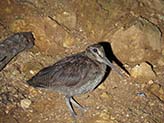
JSPB is committed to reserch and conservation activities of wild birds and other wildlife and awareness raising activities on them. JSPB and Amami ornithologists' club wild together forcus on research and conservation activities of Amami woodcocks and Owston's Woodpeckers in 2021, endangered species in Amami Oshima. We are planning to to research on the migration route of Amami woodcocks by putting GPS tags in Amami Oshima and Okinawa Island. Also we will research on the home range and popuration of Owston's Woodpecker by putting GPS tags and try to identify how to make suitable nest boxes for them,such as materials,structure and location.
■ Activity locations: Kagoshima Prefecture, Amami Oshima Island
■ Grant amount: 3 million yen

Since 2015, the Japanese Association of Zoos and Aquariums has been working with the Ministry of the Environment to conserve Japanese Rock Ptarmigan outside their habitat. We are currently working on the analysis of learning behaviors that occur during breeding by mother birds' egg incubation, the study of appropriate environments, the acquisition of intestinal bacteria, and the development of feedstuffs, with the aim of acquiring the abilities necessary for Japanese Rock Ptarmigan to survive in the wild in captivity.
■ Activity locations: Tokyo, Kanagawa, Tochigi, Nagano, Toyama, and Ishikawa Prefectures
■ Grant amount: 2.9 million yen
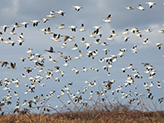
One hundred years ago, large papulation of Lesser Snow Geese,Anser c. caerulescens, was breeding on the Arctic Coast of the Russia and migratiing to East Asia including Japan. This popuration,however,had declined dramatically due to overhunting and artificial change in habitat. Following an agreement at the first meeting for the restoration of Lesser Snow Geese in East Asia, held in Sendai in January 1993, we started a cooperative international project that aims to save this species from exinction in Asia. As a result,the number of Lesser Snow Geese wintering in Japan has increased up to 1667 birds in the last season,2020/2021winter. Besides the successful result, there remain some unsolved problems and subject on Lesser Snow Geese restoration project. We are planning the following operations in recent years:
♦ Monitoring a trend of Lesser Snow Geese wintering in Japan.
♦ Investigation on breeding area to discover nesting sites of Lesser Snow Geese migrating to Japan.
♦ Symposium on Lesser Snow Geese Restoration Project to discuss the scientific problems and to raise public awareness on the project.
♦ Publishing a monograph that introduce the hole contents on the project.
■ Activity locations: Hokkaido, Tohoku, Kanto, Northeast Russia, Korea, China
■ Grant amount: 2.7 million yen
(IPPM-OWS)

IPPM-In FY 2021, IPPM-OWS will aim to continue to support the formation of a stork conservation network in Asian regions and the formation of a meta-population in Japan that serves as the foundation for the network. To this end, we will provide support for improving the environment for multi-pair breeding at municipal breeding grounds, as well as establishing a system to promote successful breeding in new municipal nesting areas. In addition, we will help formulate plans for breeding, raising, and releasing birds, as well as disseminating information internationally.
■ Activity locations: All over Japan
■ Grant amount: 2.5 million yen
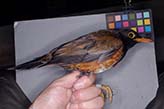
The Yamashina Institute of Ornithology was founded in 1932 by the late Dr. Yoshimaro Yamashina, who built an ornithological specimen hall in the private residence of the Yamashina family in Nanpeidai, Shibuya-ku, Tokyo, at his own expense. In 1942, the Yamashina Institute of Ornithology was established with the permission of the Ministry of Education as an incorporated foundation. Currently, the Institute consists of a research division consisting of researchers and specialists, and Administration Bureau. The institute's collection now includes 86,000 specimens and 62,000 library collection. The institute, as a base for ornithology, conducts fundamental studies and research, as well as bird banding commissioned by the Ministry of the Environment. Furthermore, the institute promotes public awareness on ornithology by publishing academic journals featuring research articles and newsletters introducing research activities in an easy-to-understand format. On April 1, 2012, Yamashina Institute for Ornithology was incorporated as a public foundation.
■ Activity locations: Hokkaido, Tokyo, Okinawa Island, etc.
■ Grant amount: 2 million yen
of the Japanese Mountain Hawk -Eable
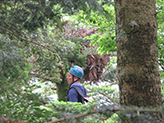
This project aims to scientifically elucidate the ecology of the mountain hawk eagle and to conserve environments in which breeding pairs can live and breed in a stable manner. In FY 2021, we will analyze and create a Geographic Information System (GIS) for the distribution of vegetation in the core area where mountain hawk eagles nest in artificial forests, and based on the habitat results for prey animals in FY 2020, we will compile the forest management methods for artificial forests necessary for improving the quantity and quality of hunting sites in the core area.
■ Activity location: Suzuka Mountain Range
■ Grant amount: 1.6 million yen
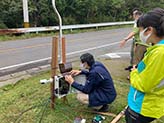
Our mission is to create communities and societies that coexist with wildlife on the small island of Ryukyu Arc. Our many trials of Okinawa rail's conservation,such as rescue and captive breeding have led us to success of technical developments in natural brssding and artificial hatching under captivity. We have also startied working on Okinawa rail`s back-to-wild project. Furthermore,we are expanding our activities to the surrounding island of Okinawa to provide veterinary care suitable for local wildlife and take measures against invasive species.
■ Activity location: Okinawa Prefecture
■ Grant amount: 1.5 million yen

Water Birds Study Group Japan mainly conducts research and conservation activities for birds of the order Shorebirds, especially little terns.
■ Activity locations: Chiba, Okinawa, and Tokyo Prefectures
■ Grant amount: 1 million yen

Surveys on the distribution of the Red-crowned Crane and its popuration size. Areal and trrrestrial Surveys during the breeding season, and collecting anecdotal pairs and their chicks. Banding chicks and tracking the previously banded cranes.
■ Activity locations: Hokkaido
■ Grant amount: 1 million yen
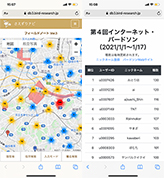
To build a society where humans and nature can coexist in harmony, it is necessary to collect basic information on the distribution and ecology of biological species, to understand the current situation, and to consider countermeasures. Japan Bird Research Association coordinates survey schemes in which many people, including amateur observers, participate to collect bird observation records, and analyze the data collected.
■ Activity locations: All over Japan
■ Grant amount: 0.5 million yen

The Akita Bird of Prey Survey Group was established to collect information on the habitat, distribution, and breeding habits of birds of prey in Akita Prefecture, as well as to contribute to the protection and conservation of their habitat. In FY 2021, we will conduct field surveys primarily on golden eagles, and through collaboration with relevant government agencies and research groups in a number of regions, we will collect, compile, and share information on their habitat, thus contributing to the protection and conservation of golden eagles in Akita Prefecture.
■ Activity location: Akita Prefecture
■ Activity location: Akita Prefecture
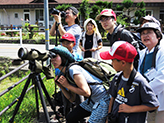
The Yawatakogen Highlands, located in the Nishi-Chugoku Sanchi Quasi-National Park, is a habitat and rest site for valuable migratory birds that include the pine bunting, the yellow-throated bunting, and the roller.We will continue to conduct surveys, research, and conservation activities focused on the ecology of these birds, maintain a healthy ecosystem, and hold nature observation events to spread awareness and educate the public while maintaining close ties to the local community, with the goal of making the precious migratory birds of the Yawatakogen Highlands feel like a more familiar presence.
■ Activity locations: Hiroshima Prefecture
■ Grant amount: 0.4 million yen
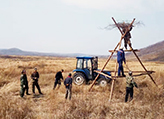
The foundation, which conserves endangered species such as the stork and crested ibis and conducts its own surveys, has been conducting field surveys to gather information on stork breeding, wintering, and stopover sites on the continent since FY 2019, and will continue these activities in FY 2021.While we assume some activities will not be conducted due to COVID-19, we will take advantage of the collaborative survey and research system we have created to collect and compile highly accurate information through cooperation with local communities.
■ Activity locations: China (Northeast, North China, and the Yangtze River basin)
■ Grant amount: 0.4 million yen